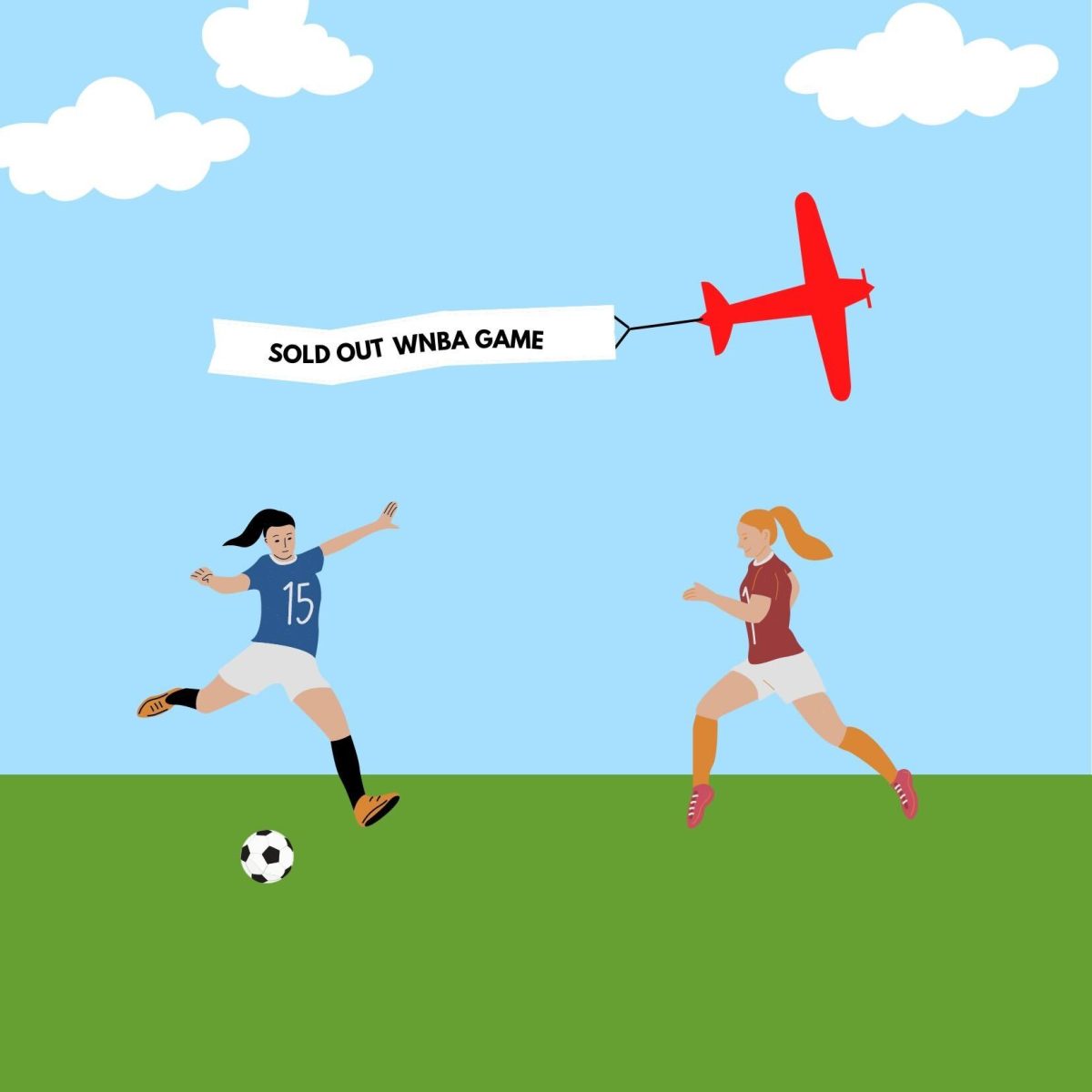From claims that no one watches women’s athletics to its limited profit capability, has anyone thought to try and put these top-tier athletes in prime time and on center stage like successful men’s leagues?
Rather than creating another failed football league in this country, of which there have been six and counting as the United States Football League (USFL) will attempt, yet again, to not implode like the numerous before in April, investors should instead invest in athletics with years of history and success. With proper funding and media attention, women’s sports leagues could fill an entertainment gap that portions of the population have been seeking.
For a sports league to thrive, it needs proper exposure, and most importantly, investment. This can come not just monetarily, but also with resources, time and coverage.
Last year the country was put on notice about the unequal “swag bags” women student-athletes received at their respective NCAA basketball tournaments. This, compounded with what the women’s weight rooms lacked, forced the NCAA to address what it is doing to fix the gender-equity gap that plagued it last year.
It became no surprise to me that almost a year later, Sports Illustrated put out a piece about the problems with ownership in the WNBA as well. The article focuses on how to create equity for women’s athletics and WNBA’s current shortcomings when it comes to attaining necessary resources.
The focus of the Sports Illustrated article is the rule in the WNBA’s collective bargaining agreement that does not allow its owners to have their players fly on charter flights. The league fined New York Liberty owner Joe Tsai $500,000 for violating this rule in the second half of last season, even though Tsai has brought up solutions to having the entire league’s flights chartered by attaining a sponsor.
For the WNBA specifically, it is a league and sport whose offseason, to the surprise of many, has players play overseas. After Phoenix Mercury center Brittney Griner was arrested in Russia, some were discovering for the first time that Griner has played in Russia for the last seven winters. Additionally, former Texas State basketball player Taeler Deer was also playing overseas in Ukraine before having to evacuate to Finland at the start of the Russian invasion.
These athletes would benefit from a league with more stability to keep them playing in the U.S. and having a proper offseason so they would not need to rely on other sources of income.
One of the biggest falsities surrounding women’s sports is that there is not an audience for it. However, not only is there an audience, that audience is growing. Last season, WNBA received record viewership in the league’s inaugural 25th year. The highest-rated game of the season was on a dog day in the summer, Aug. 15, 2021; 755,000 viewers watched a matchup between the Chicago Sky and Seattle Storm on ABC.
Basketball is also not the only women’s pro sport setting viewership records, as soccer has seen great growth in the National Women’s Soccer League. Being that they were one of the first pro sports to return to action post-pandemic, sports fans craving live-action tuned in, breaking records by nearly 300%.
With professional sports leagues’ main source of revenue being TV rights and deals, women’s basketball and soccer seem like a sound investment to make if investors are looking for an upfront return on investment. This is not to mention yet the other main revenue stream of ticket sales, which the National Women’s Soccer League thrived at.
The Portland Thorns FC saw 14,391 average fans attend games in its 2021 campaign. And in the WNBA, the Phoenix Mercury had on average of 5,849 fans fill the stands in 2021. The Phoenix Mercury ended up making a trip to the WNBA’s finals on the heels of the pandemic.
The product is not the problem, despite the decreasing number of kids identifying as sports fans and their loss of interest in participating in organized sports. There needs to be a concerted effort to invest in not just professional, but also youth sports if we are to pump proper equity into the future of women’s athletics.
There are a lot of unknowns which is what allows people to shy away due to what they consider a risky investment. The reason investors try and try again for spring football leagues is due to how profitable the sport is; the NFL made more than $15 billion dollars pre-pandemic in 2019.
But all worthy investments come with risks, as the late great Jerry Buss made plenty of risks along his way to owning the Los Angeles Lakers and creating a dynasty and globally recognizable brand. Not everyone can understandably invest large sums of money, but it is easy to become a fan of a women’s athletics team and just support them with your time.
If we invest and improve an already improved product more opportunities for these sports will come about for putting these events in a larger spotlight, which in turn will continue to grow the games.
– Dillon Strine is a journalism senior
The University Star welcomes Letters to the Editor from its readers. All submissions are reviewed and considered by the Editor-in-Chief and Opinion Editor for publication. Not all letters are guaranteed for publication.
Opinion: Women’s sports deserve an equal share of investment
Dillon Strine, Opinion Editor
March 14, 2022
0
Donate to The University Star
Your donation will support the student journalists of Texas State University. Your contribution will allow us to purchase equipment and cover our annual website hosting costs.
More to Discover











